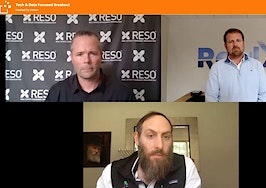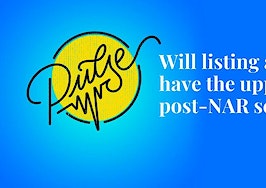While we wait to see how the fall season is going to unfold, the residential market has been booming. Many agents I chat with are “making hay while the sun shines,” but they’re also very concerned with how they are going to rebuild the pipeline this fall — especially if there is a resurgence from the pandemic.
The strategies below offer a concrete way to build relationships with new, high-net-worth prospects without “selling.” In our coaching, we usually teach that if you are selling to the ultra affluent, then you’re done.
Asking for a referral is not enough
I’ve watched and read countless panels, books and seminars on referrals. We all know that referrals are one of the leading sources and most effective ways to get new clients. When it comes to the high-net-worth and ultra-affluent market, referrals emerge as one of the only paths for access.
What the data says about referrals
According to Nielsen research, 92 percent of consumers indicated they believe friends and families over advertising. What’s more, 64 percent of marketing executives said they believe word-of-mouth marketing is the most effective, and 6 percent say they have mastered it.
In addition, the data shows that referrals have the highest conversion rate (four times), customers are the most loyal and that they spend the most money.
We all know what the data highlights, and if we take the time to inventory our top clients, they most likely will have come from one or two referral sources. But what is really behind this trend?
A key point is that with a referral, you’re truncating an important ingredient that’s critical for dealing with the high-net-worth and ultra-high-net-worth market — trust. A referral grants you a level of trust by default because the person making the referral is, in essence, lending you a bit of their social capital.
Understanding the challenges as a foundation for changing your mindset
Before we can cultivate the right habits, we have to change our mindset and accurately diagnose the problems. By identifying and defining the problems and mistakes you’ve been making, you will start the process of changing and preparing your mindset to shift from these mistakes to their antidotes. This will empower you to control and supercharge your own growth.
The 3 deadly sins of referrals
Here are the three biggest mistakes agents often make when prospecting the high net worth — plus a few ways to avoid them.
Mistake No. 1: Hope marketing
I came up with the term “hope marketing” many years after seeing so many clients and sales professionals acknowledge that referrals are their primary driver for growth but rely on “hope” for their next referral.
They would tell me that they didn’t want to be pushy, and they believed that if they served their clients well, the referrals would just roll in. The problem with this approach is that you are not in control of your growth. Hope is not a strategy for growth.
The shift in strategy: Bespoke marketing
The answer here really relies on changing your mindset to saying, “I know referrals are my best client pipeline, and I’m deciding today to create some strategy or plan, even if it’s one piece of paper, where I’m not just hoping and waiting for referrals to come in.”
We start by having people inventory their top clients and relationships to determine who are — and could be in the future — their best referral sources. This is a good first step you can do today.
Mistake No. 2: An outward-in approach
Many sales professionals succumb to the siren call of “outward-in” prospecting approaches. They identify a prospect out there through rich lists, newspaper articles or liquidity events and then wonder how they can get that person as a prospect. The problem is that they are always left asking the question, “How do I get in front of the prospect?”
The shift in strategy: An inward-out approach
Again, here’s a great mindset shift that will impact the trajectory of your career. For the rest of your career, try to catch yourself when you’re asking the question, “How do I get to (a certain person)?”
Recognize that you’re practicing an outward-in approach, which is going to consume your time and resources. Get into the mindset that your fastest and most efficient growth will come from cultivating your existing relationships.
Mistake No. 3: Open-ended generic referrals
Many sales professionals tell me they’re being proactive when it comes to asking for referral requests. But typically, when I dive a bit deeper, I find that they’re using an open-ended approach by asking, “Do you know anyone I should be talking to?”
The problem with this approach is that asking your clients and key relationships this question forces them to plumb the deepest reaches of their networks for your next prospect. Most sales professionals fall short here for one of these two reasons:
- They didn’t take the time to survey their referral sources networks to identify a specific prospect, which is a time and resource allocation issue.
- They’re afraid of damaging the relationship and offending the client (whether it’s a former client or friend).
The shift in strategy: Specific introductions
If you do this step, you actually address the two mistakes. The data shows — and we all know from experience — that if you give someone a specific item to react to or act on, the probability of getting a response exponentially increases.
The mindset and habit to cultivate here is to never go into a client meeting or Zoom session without having done some research and identifying (using LinkedIn or bio pages that list boards) some specific relationships that you would like to add to your portfolio through a referral.
It may be the case that the opportunity doesn’t present itself or the content is not right at that time, but the discipline of having specific prospects associated with your existing relationships will elevate your game to the next level.
David Friedman is the co-founder of WealthQuotient. Connect with him on LinkedIn or Twitter.













